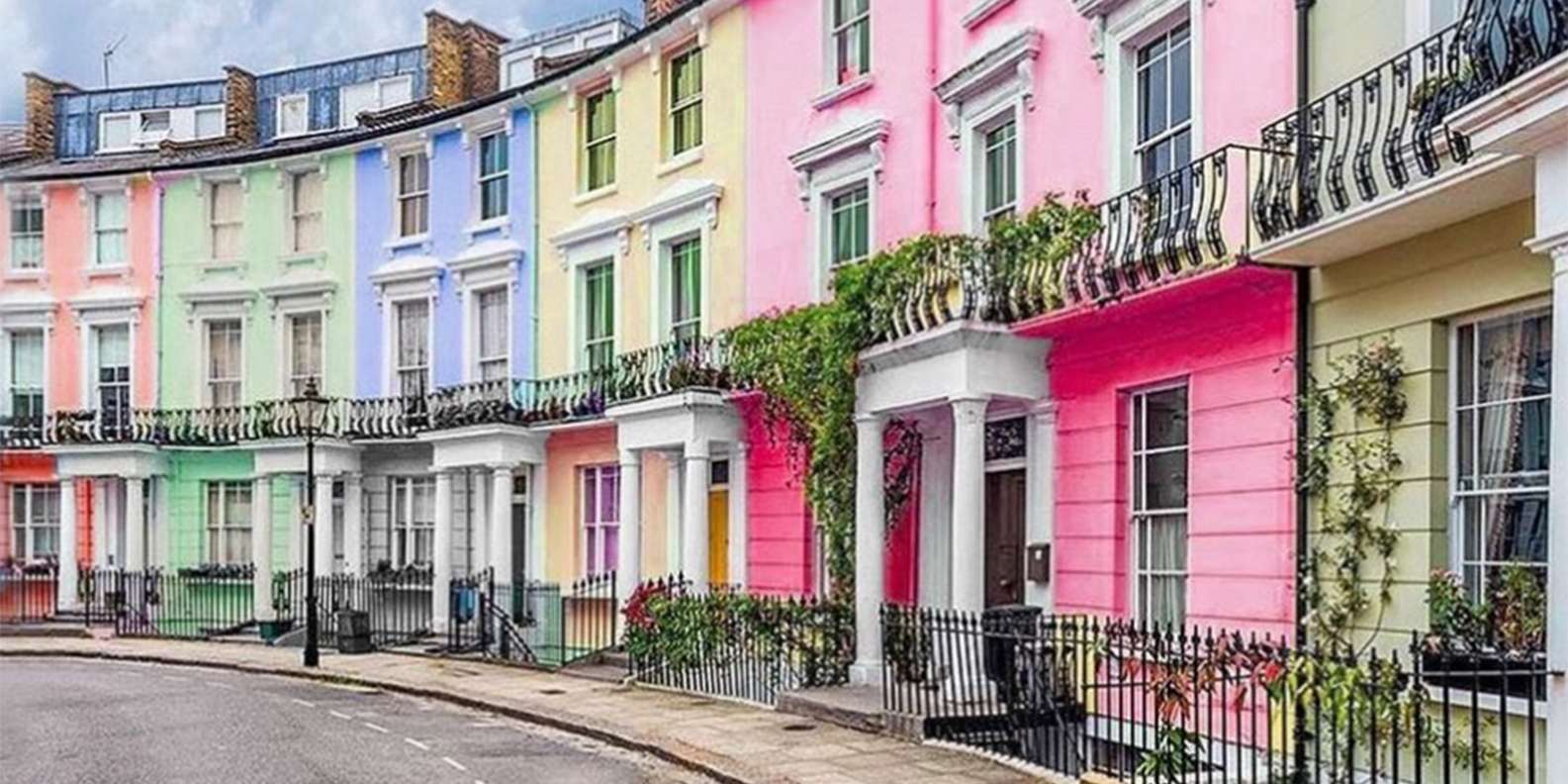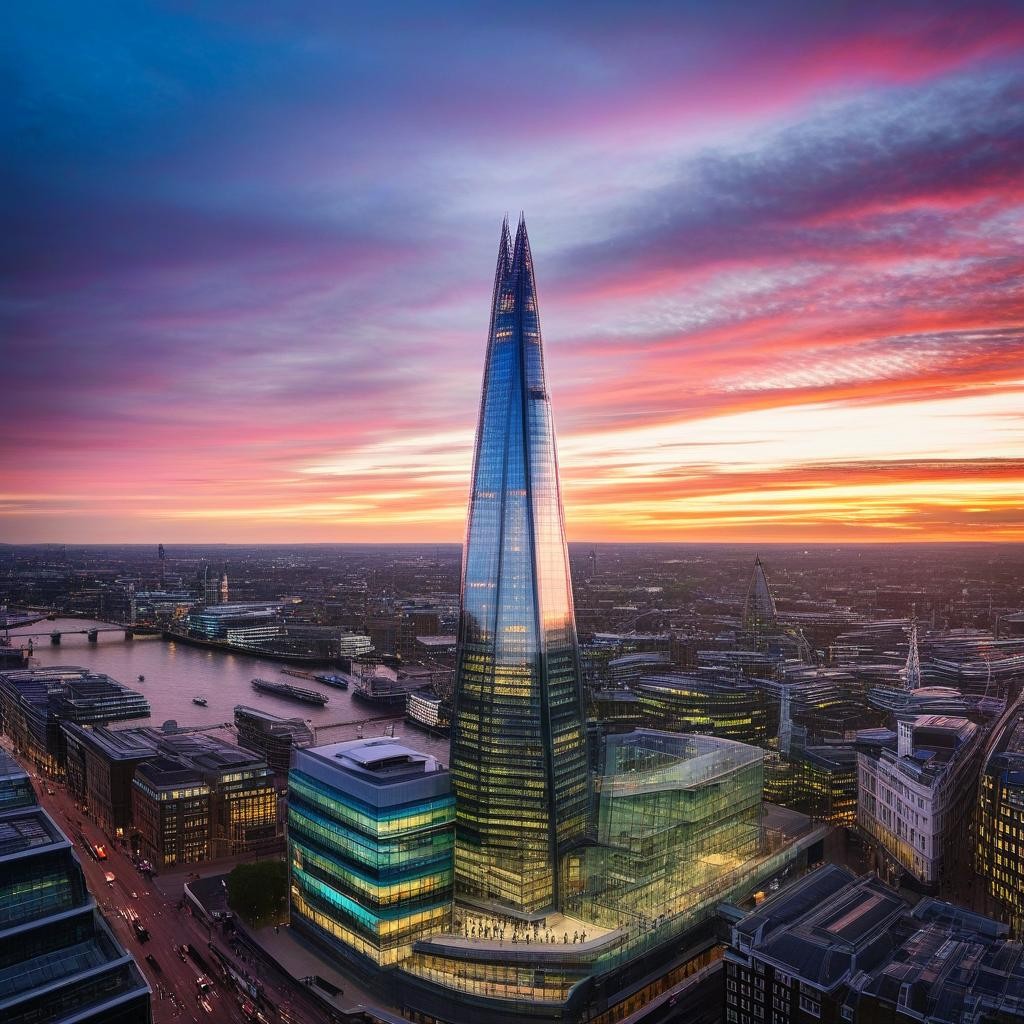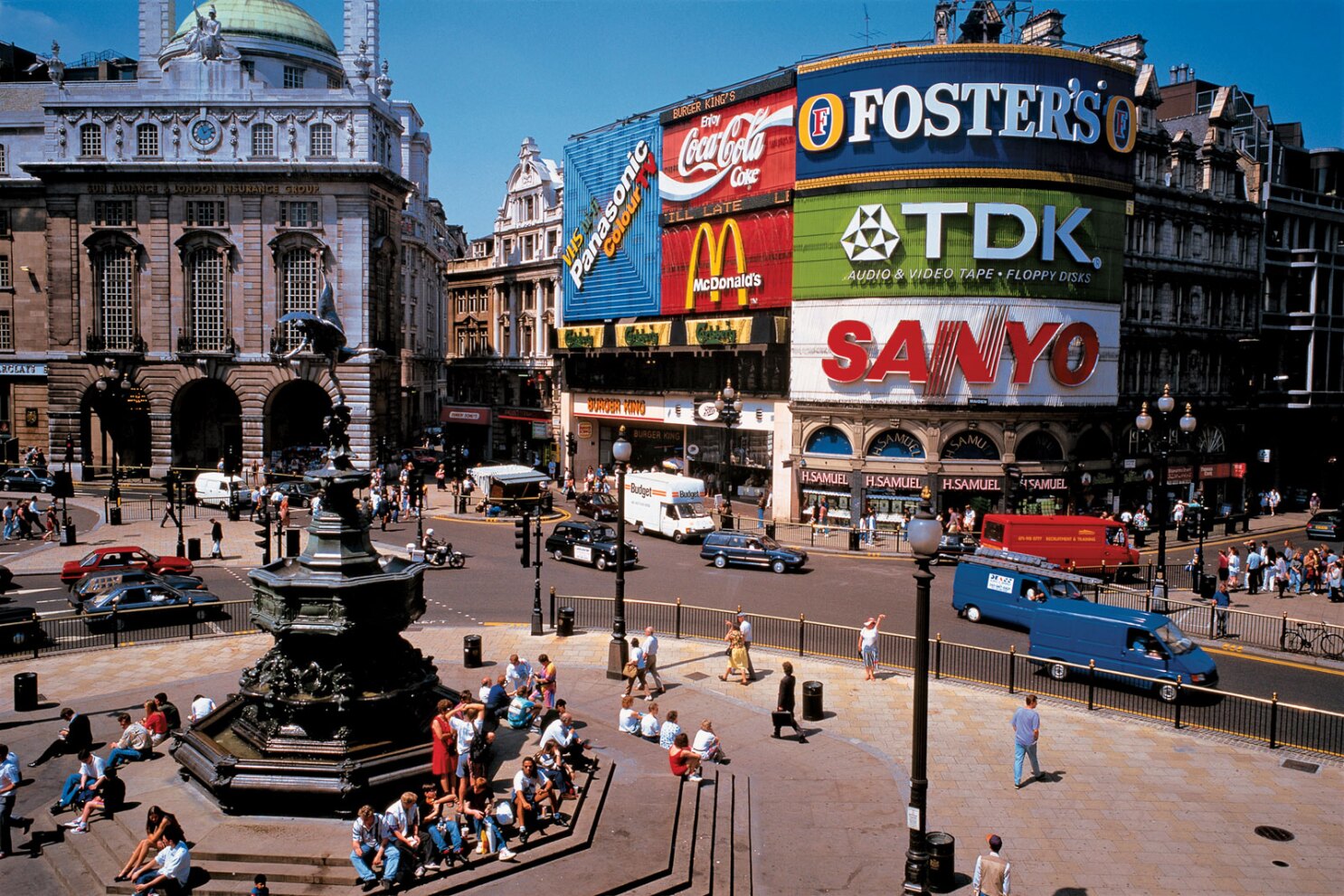26 Best Spots For Photography In London You Can't Miss
If you’re searching for the best spots for photography in London, this guide will take you through iconic landmarks and hidden gems.
Oct 24, 202410.1K Shares377.6K Views

London, with its mix of historical grandeur and modern innovation, offers a photographer's paradise. From iconic landmarksthat define the city’s skyline to hidden gems nestled in quiet corners, the opportunities for capturing stunning images are endless.
Every street, building, and park offers its own unique story, waiting to be told through the lens. With its dynamic urban scenes, grand architecture, and tranquil natural spaces, London is the ultimate playground for both amateur and professional photographers looking to capture something special.
This guide highlights the most photogenic spots around the city, offering insights on how to make the most of each location for your perfect shot.
1. Tower Bridge
Tower Bridge stands as one of London's most iconic structures, offering spectacular photographic opportunities. Its Gothic towers and panoramic views of the Thames make it a prime location for both day and night shots.
Tips For Capturing Tower Bridge:
- Golden Hour: Visit during sunrise or sunset to capture the bridge bathed in warm, golden light.
- Night Photography: The bridge’s illumination creates a dramatic effect; use a tripod for long exposure shots to capture the lights.
2. Buckingham Palace
The grandeur of Buckingham Palace, the official residence of the British monarch, is a must-photograph for any visitor. The palace's majestic facade and the colorful Changing of the Guard ceremony offer rich photographic subjects.
Tips For Capturing Buckingham Palace:
- Early Arrival: Get there early to avoid crowds and secure the best vantage points for the Changing of the Guard.
- Wide-Angle Lens: Use a wide-angle lens to capture the full scale of the palace and its surroundings.
3. The London Eye
The London Eye, with its impressive height and panoramic views, provides fantastic opportunities for capturing the cityscape. From the observation deck, you can photograph sweeping views of London's landmarks.
Tips For Capturing The London Eye:
- Clear Days: For the best shots, visit on a clear day or during sunset to capture the city in its golden hour glory.
- Wide-Angle Lens: A wide-angle lens is perfect for capturing the expansive views from the top.
4. Covent Garden
Covent Garden, bustling with activity and vibrant colors, is perfect for street photography. The market's historic architecture and lively atmosphere provide a dynamic backdrop for your photos.
Tips For Capturing Covent Garden:
- Golden Hour Light: The soft light of the morning or late afternoon enhances the market’s vibrancy.
- Candid Shots: Capture street performers and market stalls to convey the lively spirit of the area.
5. Notting Hill
Notting Hill, famous for its charming streets and colorful houses, is a delightful area for capturing whimsical and picturesque shots. The vibrant hues of Portobello Road are particularly photogenic.
Tips For Capturing Notting Hill:
- Bright Colors: Visit during daylight to make the most of the colorful facades.
- Portobello Market: Weekends offer a lively market scene that adds extra charm to your photos.
6. St. Paul’s Cathedral
St. Paul’s Cathedral is renowned for its stunning dome and architectural beauty. The cathedral’s exterior and the surrounding areas provide numerous opportunities for capturing detailed and grand shots.
Tips For Capturing St. Paul’s Cathedral:
- Architectural Details: Use a telephoto lens to focus on intricate details of the facade.
- Garden Views: Photograph from the surrounding gardens for a broader perspective.
7. The Shard
The Shard, London’s tallest building, offers a modern contrast to the city's historic landmarks. Its unique design and the views from its observation deck provide exciting photographic opportunities.
Tips For Capturing The Shard:
- Reflection Shots: The building’s glass facade reflects the sky and surrounding architecture, creating interesting compositions.
- Observation Deck: Use a wide-angle lens for expansive shots of the city from above.
8. South Bank
The South Bankof the Thames is vibrant and full of life, with numerous photo-worthy spots including the Southbank Centre and dynamic street art. The riverside location also offers excellent views of London’s skyline.
Tips For Capturing South Bank:
- River Reflections: Capture reflections in the Thames for artistic and striking images.
- Street Art: Explore and photograph the diverse range of street art and sculptures along the South Bank.
9. Westminster Abbey
Westminster Abbey, with its rich history and Gothic architecture, is a must-photograph landmark. The intricate details of the facade and the grandeur of the interior are ideal for detailed shots.
Tips For Capturing Westminster Abbey:
- Exterior Shots: Photograph the facade in the early morning or late afternoon for the best light.
- Interior Photography: Use a tripod to capture the stunning details inside, respecting any photography restrictions.
10. Hyde Park
Hyde Parkoffers a peaceful retreat with its expansive landscapes and beautiful landmarks like the Serpentine Lake. The park’s natural beauty provides excellent opportunities for nature and landscape photography.
Tips For Capturing Hyde Park:
- Seasonal Changes: Capture the park’s changing seasons for varied and interesting shots.
- Reflections: Photograph the lake’s reflections for serene and picturesque images.
11. Leadenhall Market
Leadenhall Market, with its Victorian charm and colorful architecture, offers a contrast to the modern cityscape. The market’s ornate details and bustling atmosphere are perfect for vibrant photographs.
Tips For Capturing Leadenhall Market:
- Architectural Shots: Focus on the intricate details of the market’s design.
- Quiet Times: Visit during quieter periods to avoid crowds and get clearer shots.
12. Kew Gardens
Kew Gardensis a botanical paradise with a diverse range of plant life and architectural features like the Palm House and Treetop Walkway. The gardens offer a variety of photographic subjects.
Tips For Capturing Kew Gardens:
- Botanical Diversity: Photograph the wide range of plant species and garden structures.
- Early Mornings: Early mornings offer beautiful light and fewer visitors.
13. Tate Modern
The Tate Modern’sunique architecture and contemporary art exhibitions provide a modern backdrop for photography. The building’s industrial design contrasts with the vibrant art inside.
Tips For Capturing Tate Modern:
- Architectural Angles: Use wide-angle shots to capture the building’s industrial features.
- Art Exhibits: Focus on interesting art pieces and how they interact with the space.
14. Brick Lane
Brick Lane, known for its vibrant street art and multicultural vibe, is ideal for capturing the bohemian spirit of London. The area's murals, markets, and eclectic mix provide dynamic photographic opportunities.
Tips For Capturing Brick Lane:
- Street Art: Explore and photograph the colorful murals and graffiti.
- Market Scenes: Capture the lively atmosphere of the markets for candid and vibrant shots.
15. The Millennium Bridge
The Millennium Bridge, connecting St. Paul’s Cathedral with Tate Modern, offers striking modern architectural shots and panoramic views of the city. The bridge’s sleek design is perfect for creative photography.
Tips For Capturing The Millennium Bridge:
- Night Photography: The bridge is beautifully lit at night, making it a great subject for long exposure shots.
- Wide-Angle Lens: Use a wide-angle lens to capture the full span of the bridge and its surroundings.
16. Big Ben
Big Ben is one of London’s most recognizable landmarks, offering classic views of the city’s political heart. The combination of the clock tower and the surrounding Parliament buildings is perfect for capturing historical grandeur.
Best Time To Visit:
- Golden Hour: The warm glow of the rising or setting sun highlights the intricate details of the clock tower.
- Night Photography: The tower’s illumination creates a striking contrast against the night sky, ideal for long-exposure shots.
Photography Techniques:
- Wide-Angle Lens: Use a wide-angle lens to capture both Big Ben and the Houses of Parliament.
- Reflection Shots: Take advantage of reflections in the Thames for unique compositions.
17. Barbican Centre
The Barbican Centre, with its Brutalist architecture, provides photographers with striking geometric shapes and modern designs. The juxtaposition of concrete against greenery in its surrounding gardens creates intriguing contrasts.
Best Time To Visit:
Midday: The harsh shadows cast by the concrete structures during midday can add depth to architectural shots.
Photography Techniques:
- Abstract Photography: Focus on the strong lines and patterns for artistic shots.
- Wide-Angle Lens: Perfect for capturing the immense scale of the architecture.
18. Sky Garden
The Sky Garden offers stunning panoramic views of London from one of the city’s tallest buildings. It’s a fantastic place to capture the cityscape and architectural marvels from above.
Best Time To Visit:
Sunset: The golden hour from the Sky Garden provides breathtaking cityscape views bathed in warm light.
Photography Techniques:
- Telephoto Lens: Use a telephoto lens to zoom in on landmarks across the city.
- Wide-Angle Lens: Capture the full breadth of the panoramic view from the observation deck.
19. Canary Wharf
Canary Wharf, London’s modern financial district, features sleek skyscrapers and reflective glass buildings, perfect for contemporary urban photography.
Best Time To Visit:
Evenings: The area’s lights reflecting on the water create excellent conditions for night photography.
Photography Techniques:
- Architectural Shots: Focus on the sharp angles and glass reflections for modern urban compositions.
- Long Exposure: Capture the energy of the area by using long exposure to show movement in the bustling streets.
20. Neal’s Yard
Tucked away in Covent Garden, Neal’s Yard is known for its colorful facades and hidden charm. It’s perfect for photographers who enjoy vibrant street photography.
Best Time To Visit:
Daylight: The bright colors of the buildings pop during the daytime, especially in the afternoon light.
Photography Techniques:
- Bright Colors: Use natural light to enhance the vibrant hues of the buildings.
- Candid Shots: Capture the lively atmosphere and visitors enjoying the quirky cafes and shops.
21. Richmond Park
Richmond Park, with its sprawling landscapes and resident deer, offers fantastic opportunities for nature and wildlife photography. It’s one of London’s most tranquil green spaces, ideal for capturing the beauty of nature.
Best Time To Visit:
Early Morning: Capture the park’s wildlife in the early morning when the light is soft and there are fewer visitors.
Photography Techniques:
- Telephoto Lens: Perfect for wildlife shots, especially the park's famous deer.
- Landscape Shots: Capture the wide, open landscapes and the changing colors of the seasons.
22. Shoreditch
Shoreditch is renowned for its vibrant street art and trendy, urban atmosphere. It’s a hub for capturing colorful murals, graffiti, and the edgy side of London.
Best Time To Visit:
Afternoons: The bustling streets come alive during the day, perfect for street photography.
Photography Techniques:
- Street Art: Explore the area for murals and graffiti, perfect for bold, artistic shots.
- Candid Photography: Capture the eclectic crowd and urban vibe for dynamic street scenes.
23. St Dunstan In The East Church Garden
A hidden gem, St Dunstan in the East is an old church ruin now turned into a garden. The overgrown foliage and Gothic ruins create a magical, atmospheric setting, ideal for serene and moody photography.
Best Time To Visit:
Midday: The sunlight filtering through the ruins creates interesting shadows and contrasts.
Photography Techniques:
- Wide-Angle Lens: Capture the blend of ruins and nature.
- Black and White Photography: The moody atmosphere of the church ruins lends itself well to black and white compositions.
24. Greenwich Park
Greenwich Park offers some of the most breathtaking panoramic views of London from a higher elevation. With the historic Royal Observatory and wide-open green spaces, it’s ideal for both landscape and cityscape photography.
Best Time To Visit:
Early Morning: Capture stunning views of London with fewer crowds, and the light from the rising sun gives the city a golden glow.
Photography Techniques:
- Wide-Angle Lens: Perfect for capturing sweeping cityscapes from the top of the hill.
- Telephoto Lens: Zoom in on distant landmarks from the park’s viewpoint.
25. Natural History Museum
The Natural History Museum is not just a center of knowledge, but a masterpiece of architecture. Its grand, intricate design, both inside and out, provides amazing photographic opportunities.
Best Time To Visit:
Morning: Arrive early to avoid crowds and capture the museum’s architecture in soft natural light.
Photography Techniques:
- Architectural Shots: Focus on the detailed interior, especially the grand entrance hall.
- Symmetry: The museum’s symmetrical design makes it ideal for balanced, aesthetic shots.
26. Piccadilly Circus
Piccadilly Circus is famous for its vibrant lights and busy atmosphere, making it a great location for street and night photography.
Best Time To Visit:
Evening/Night: The illuminated billboards and bustling crowds provide exciting opportunities for energetic street shots.
Photography Techniques:
- Long Exposure: Capture the motion of people and traffic for dynamic and artistic photos.
- Wide-Angle Lens: Perfect for capturing the full scope of the lively scene.
Practical Photography Tips For London
- Permits: While most public areas allow photography, some locations may require permits for commercial or drone photography.
- Weather: London’s weather can be unpredictable, so check the forecast and be prepared for sudden changes.
- Transportation: London’s public transport system makes it easy to hop between different photography spots, but be mindful of peak hours when the crowds are dense.
- Crowd Avoidance: Early mornings or late evenings are the best times to photograph major landmarks without large crowds.
Frequently Asked Questions
When Is The Best Time To Photograph Tower Bridge?
The golden hour, shortly after sunrise or before sunset, is ideal for photographing Tower Bridge. For night shots, use a tripod to capture the bridge's illumination.
How Can I Avoid Crowds At Buckingham Palace?
Visit early in the morning or during the off-season to avoid large crowds. Arriving well before the Changing of the Guard will help you get a better view.
Are There Restrictions On Photography At Westminster Abbey?
Photography is not allowed inside Westminster Abbey. However, you can photograph the exterior and surrounding areas. Check for any updated rules before visiting.
What Equipment Is Best For Photographing The London Eye?
A wide-angle lens is ideal for capturing the London Eye and the cityscape. For detailed shots from the observation deck, consider using a telephoto lens.
Can I Take Photos Inside The Tate Modern?
Photography is generally permitted inside the Tate Modern, but be aware of any restrictions on specific exhibitions. Always check the museum’s photography policy on arrival.
Conclusion
London’s diverse range of photographic locations allows you to explore its rich tapestry of history, culture, and modernity. From iconic landmarks and architectural marvels to vibrant street scenes and serene parks, each spot offers a unique perspective. By experimenting with different techniques and times of day, you can capture the true essence of this dynamic city.
Jump to
1. Tower Bridge
2. Buckingham Palace
3. The London Eye
4. Covent Garden
5. Notting Hill
6. St. Paul’s Cathedral
7. The Shard
8. South Bank
9. Westminster Abbey
10. Hyde Park
11. Leadenhall Market
12. Kew Gardens
13. Tate Modern
14. Brick Lane
15. The Millennium Bridge
16. Big Ben
17. Barbican Centre
18. Sky Garden
19. Canary Wharf
20. Neal’s Yard
21. Richmond Park
22. Shoreditch
23. St Dunstan In The East Church Garden
24. Greenwich Park
25. Natural History Museum
26. Piccadilly Circus
Practical Photography Tips For London
Frequently Asked Questions
Conclusion
Latest Articles
Popular Articles
























